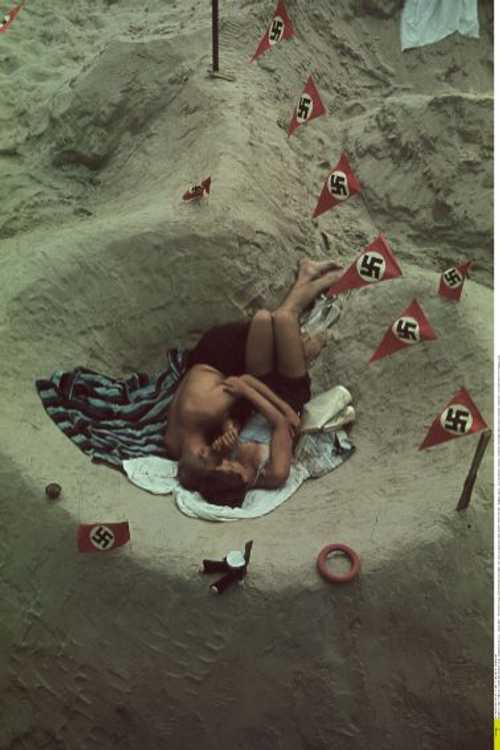
Homefront
Fortress Germany ?
Ullstein Bild (collection) - original colour \'photo.
A young couple exchange sweet nothings inside a swastika-decorated sand fort in carefree prewar days. In his story, "On Reugen Island, Summer 1931", English writer Christopher Isherwood describes the phenomenon of beach forts as follows: "There are now a good many summer visitors to the village. The bathing beach by the pier, with its array of banners, begins to look like a medieval camp. Each family has its own enormous hooded wicker beach-chair, and each chair flies a little flag. There are the German city-flags - Hamburg, Hanover, Dresden, Rostock and Berliin, as well as the National Republican and Nazi colours. Each chair is encircled by a low sand bulwark upon which the occupants have set inscriptions in fir-cones: Waldesruh. Familie Walter. Stahlhelm. Heil Hitler ! Many of the forts are also decorated with the Nazi swastika. The other morning I saw a child of about five years old, stark naked, marching aloong all by himself with a swastika flag over his shoulder and singing 'Deutschland uber alles' ". The young couple in the 'photo have, understandably, dispensed with the beach-chair, but not with the swastikas. I should be curius to know whether making beach-forts is still a common German custom while at the seaside ? Best regards, JR.
4143 Views
11/26/2012
